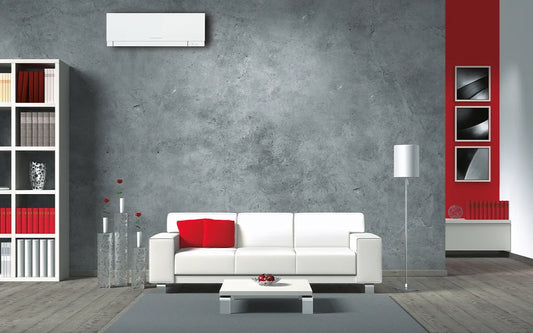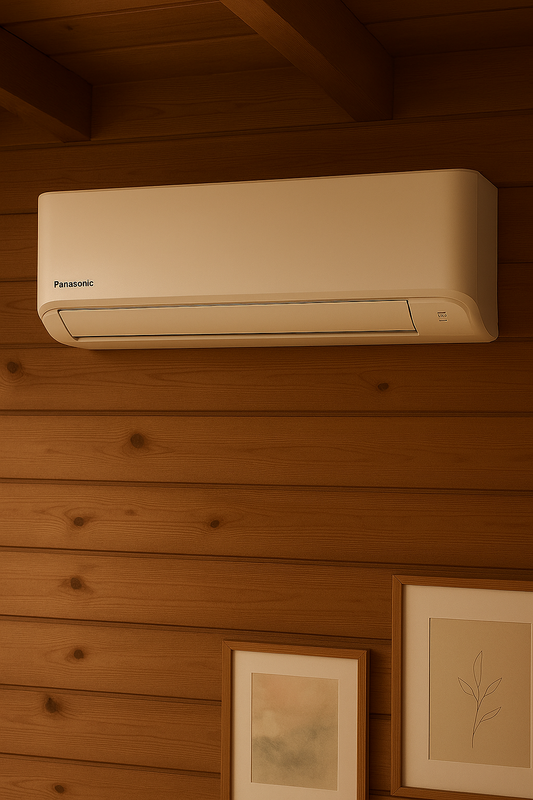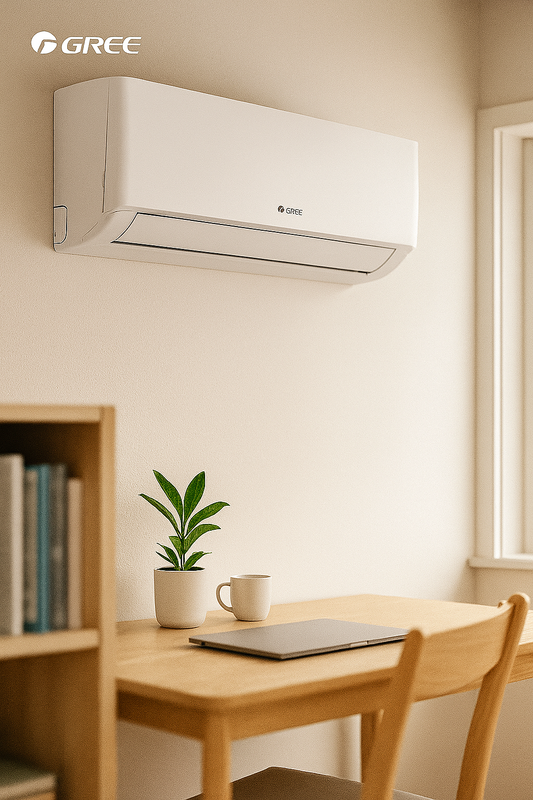Installation av Mitsubishi luftvärmepump
Inledning
Att installera en luftvärmepump från Mitsubishi är ett klokt val för både energieffektivitet och komfort. I denna artikel kommer vi att utforska processen för installation av en luftvärmepump från Mitsubishi, dess fördelar och användningsområden, samt vanliga frågor som kan uppstå.
Definition och bakgrund
En luftvärmepump från Mitsubishi är en avancerad uppvärmnings- och kylsystem som utnyttjar energin i utomhusluften för att värma eller kyla ditt hem eller arbetsplats. Denna teknik bygger på principen om värmepumpen, som flyttar värme från en kallare plats till en varmare plats, vilket gör den effektiv även vid kalla utomhustemperaturer.
Fördelar och användningsområden
Installation av en luftvärmepump från Mitsubishi erbjuder flera fördelar, inklusive energieffektivitet, miljövänlighet och jämn temperaturkontroll. Denna teknik är särskilt användbar i områden med måttliga klimatförhållanden och kan användas både för uppvärmning under vintermånaderna och kylning under sommaren.
- Energieffektivitet: Luftvärmepumpar använder betydligt mindre energi jämfört med traditionella uppvärmningssystem, vilket kan leda till lägre energikostnader.
- Miljövänlighet: Genom att utnyttja den befintliga energin i utomhusluften minskar luftvärmepumpar behovet av fossila bränslen, vilket minskar koldioxidutsläppen.
- Jämn temperaturkontroll: Luftvärmepumpar erbjuder jämn och konstant temperaturkontroll i hemmet eller arbetsplatsen, vilket skapar en bekväm inomhusmiljö året runt.
Relaterade tekniker, begrepp eller variationer
Utöver luftvärmepumpar erbjuder Mitsubishi även andra avancerade uppvärmnings- och kylsystem, såsom markvärmepumpar och luftkonditioneringssystem. Dessa tekniker kan komplettera installationen av en luftvärmepump och skapa en heltäckande lösning för inomhusklimatkontroll.
Vanliga frågor (FAQ)
-
Är installation av en luftvärmepump komplicerad?
Installationen av en luftvärmepump kräver teknisk kunskap och erfarenhet. Det är rekommenderat att anlita en certifierad installatör för att säkerställa korrekt installation. -
Hur lång tid tar installationen?
Tiden för installationen kan variera beroende på faktorer som storlek på systemet och befintlig infrastruktur. Generellt sett tar installationen av en luftvärmepump från Mitsubishi några dagar. -
Vad är underhållskraven för en luftvärmepump?
Luftvärmepumpar kräver regelbunden rengöring och underhåll för att bibehålla optimal prestanda. Det rekommenderas att följa tillverkarens underhållsanvisningar och scheman.
Sammanfattning
Installation av en luftvärmepump från Mitsubishi erbjuder energieffektiv uppvärmning och kylning samt miljövänliga fördelar. Genom att utnyttja den befintliga energin i utomhusluften kan luftvärmepumpar skapa en behaglig inomhusmiljö året runt. Det är viktigt att anlita en certifierad installatör och följa tillverkarens underhållsanvisningar för att säkerställa optimal prestanda och lång livslängd för systemet.
Installation Process
The installation process of a Mitsubishi air source heat pump involves several key steps to ensure optimal performance and efficiency. Here are the general steps involved in the installation:
- Site Assessment: A certified installer will assess the installation site to determine the best location for the outdoor unit and the indoor unit. Factors such as available space, airflow, and electrical connections will be taken into consideration.
- Indoor Unit Installation: The indoor unit, which includes the fan and evaporator coil, will be installed in the designated indoor space. Careful consideration will be given to air distribution and aesthetics.
- Outdoor Unit Installation: The outdoor unit, comprising the compressor and condenser coil, will be securely mounted in an appropriate outdoor location. Proper clearance and support will be ensured to facilitate efficient operation and maintenance access.
- Piping and Electrical Connections: Refrigerant piping and electrical wiring will be carefully routed and connected between the indoor and outdoor units. Proper insulation and sealing will be applied to prevent energy loss and ensure safety.
- System Testing and Commissioning: After the installation is complete, the system will undergo thorough testing and commissioning to verify proper operation, refrigerant charge, and airflow. Any necessary adjustments will be made to optimize performance.
Energy Efficiency Considerations
One of the key considerations when installing a Mitsubishi air source heat pump is its energy efficiency. The system's coefficient of performance (COP) and seasonal performance factor (SPF) are important metrics that demonstrate its efficiency in heating and cooling. Additionally, proper sizing and installation practices play a crucial role in maximizing energy efficiency and minimizing operational costs over the system's lifespan.
Case Study: Residential Installation
Let's consider a case study of a residential installation of a Mitsubishi air source heat pump. In a typical single-family home, the installation process begins with a detailed heat load calculation to determine the appropriate system size. The indoor unit is often installed in a utility room or garage, while the outdoor unit is positioned in a suitable outdoor location, considering factors such as noise levels and airflow. The piping and electrical connections are meticulously installed to ensure optimal performance and aesthetics. Upon completion, the homeowner experiences improved comfort and energy savings compared to conventional heating and cooling systems.
Regulatory Compliance and Certification
It's important to highlight the significance of regulatory compliance and certification in the installation of Mitsubishi air source heat pumps. Installers should adhere to local building codes, electrical regulations, and environmental standards to ensure safe and legal installation practices. Furthermore, certification from reputable industry organizations demonstrates the installer's expertise and commitment to quality workmanship.
System Maintenance and Longevity
Ensuring the long-term performance and longevity of a Mitsubishi air source heat pump requires routine maintenance and care. Regular filter cleaning, coil inspection, and refrigerant checks are essential to preserving the system's efficiency and reliability. Following the manufacturer's recommended maintenance schedule and engaging professional servicing when needed will contribute to the system's extended lifespan and sustained performance.
Conclusion
The installation of a Mitsubishi air source heat pump presents an opportunity for enhanced comfort, energy efficiency, and environmental responsibility. By following best practices in installation, energy efficiency considerations, regulatory compliance, and maintenance, homeowners and businesses can benefit from a reliable and sustainable heating and cooling solution that aligns with modern environmental and economic demands.
Extended Applications
Besides residential installations, Mitsubishi air source heat pumps have extended applications in commercial and industrial settings. These systems are utilized for space heating, cooling, and hot water production in various facilities, including office buildings, retail spaces, and manufacturing plants. The scalability and adaptability of Mitsubishi heat pumps make them suitable for diverse applications, contributing to energy savings and environmental sustainability in large-scale operations.
Smart Control Integration
Mitsubishi air source heat pumps can be seamlessly integrated with smart control systems to enhance operational efficiency and user convenience. Smart thermostats, zoning controls, and remote monitoring capabilities enable precise temperature management and energy optimization. By leveraging advanced control technologies, users can customize comfort settings, monitor energy usage, and remotely access system controls, resulting in personalized comfort and cost savings.
Financial Incentives and Rebates
Many regions offer financial incentives and rebates for the installation of energy-efficient heating and cooling systems, including Mitsubishi air source heat pumps. Homeowners and businesses may be eligible for rebates, tax credits, or low-interest financing options, encouraging the adoption of sustainable HVAC solutions. Understanding available incentives and leveraging financial support can significantly offset the initial investment and accelerate the return on investment for Mitsubishi heat pump installations.
Localized Environmental Impact
The deployment of Mitsubishi air source heat pumps contributes to localized environmental benefits by reducing carbon emissions and energy consumption. As these systems operate using renewable outdoor air as a heat source or sink, they mitigate the reliance on fossil fuels and grid electricity for heating and cooling needs. This localized impact contributes to improved air quality, reduced greenhouse gas emissions, and decreased demand on centralized energy infrastructure, aligning with sustainability goals at regional and community levels.


